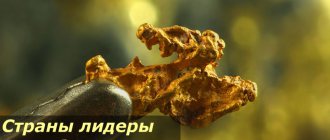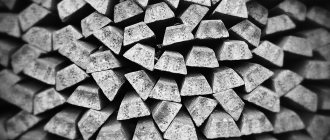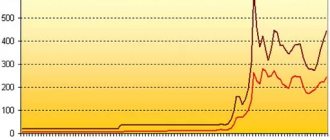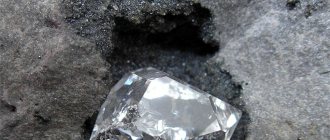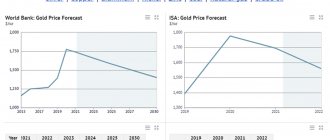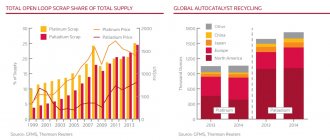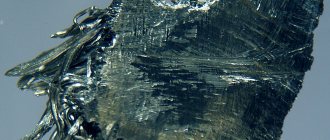Silver is the second most popular metal after gold. According to experts, the total volume of proven reserves of this precious metal in the world now reaches 600 thousand tons.
Every year about 20-22 thousand tons of silver are mined in the world. So, in 2018, according to the American Geological Survey, 27 thousand tons were produced on our planet.
Which countries make the greatest contribution to this industry, and what is the importance of Russia in the “silver” world?
Scope of metal application
The world is experiencing an increasing need for this precious metal, as it is used in various industries. Approximately 80% of mined silver bars are used for the production of various equipment and electronics, for example, mobile phones, laptop and regular computers, batteries and many other modern devices.
In industry, the metal is valued due to its high thermal and electrical conductivity. If you lower the temperature with liquid nitrogen, silver becomes a superconductor. Another important property is that the mineral does not oxidize at all, is almost completely inert and has excellent catalytic properties. A standard ingot can have a mass from 28 to 32 kg.
All waste left over from industry goes to the needs of jewelers and the production of precious coins.
At the beginning of the 21st century, production volumes almost doubled when compared with the previous period. At this rate, the deposits will last for about 30 years. Now people have depleted the mines of natural (physical) silver available on the planet by almost 95%.
Wide application of silver alloy
The purity of the material may vary, depending on many factors, including the area of use of the silver product:
- jewelry production: about 20% of argentum is sent to factories for the manufacture of jewelry and accessories, which can then be purchased in jewelry and online stores; this alloy contains copper or platinum to improve the properties and make the metal attractive;
- medicine, dentistry: argentum is widely used to coat various products, is included in preparations, and is used in dentistry (silvering, prosthetics) due to its antibacterial properties;
- industry: Ag is used in the production of batteries, radio components, contact parts of mechanisms;
- glass production: the silvering method is used, as a result, a variety of reflective surfaces are obtained;
- defense industry, for example, Ag contain elements of gas masks;
- computer and electrical engineering: the main one is the production of contact material, parts for the production of microcircuits;
- forensics: traces of a criminal are detected using silver nitrate, which makes it possible to identify sweat-fat substances on surfaces.
Silver in nature
The average content of the element in the earth's crust is approximately 70 mg per ton of ore. Usually in nature it appears as inclusions in other minerals. In its pure form, silver can be found quite rarely. In mountains and sedimentary rocks it usually accumulates in sulfides, clay, and muscovite. Silver is often mined in places where it is possible to organize the associated extraction of gold, copper and lead ore. This method is considered the most rational. Of these ores, only a few contain large amounts of Ag, from which the element can be extracted:
- Native silver.
- He'll be sad.
- Electrum.
- Polybasit.
- Pyrorgerides.
- Aguilarite.
- Giskrasite.
The concentration of precious metal in the water of the world's oceans is much greater than in the earth. But a complex and expensive technological process makes the extraction of Ag from water economically unfeasible. For living beings, this element is necessary, although its content in the body is small. It is involved in almost all metabolic processes. Quite often it can be found in meteorites.
There is an interesting case in world history when in one of the Western countries a man found a large silver nugget. His weight was 1065 kg.
Category: question-answer
Is a silver nugget soft or hard?
Expert opinion
Shabanov Andrey
Amateur prospector, has been searching for gold for over 14 years
Silver occurs in nature practically without additives; there may be a minimal amount of impurities that do not affect the properties of the material. This means that the precious metal retains its original characteristics: softness and fragility. But it does not collapse under the influence of loads, because it is very compacted, which is due to its formation in the earth’s crust. Evidence of the relative strength of the precious metal is the behavior of the diggers - they had lunch on the nugget, which weighed 20 tons when they found it, and then dragged it out of the mine.
Is it possible for a private individual or individual entrepreneur to mine natural silver?
Expert opinion
Zilbertrud Dmitry
Lawyer, legal bureau "Verdict", Voronezh
Considering that the precious metal is most often found in the territory of polymetallic deposits (including gold-silver deposits), permission to work with it has already been obtained, since gold mining is primary here. But according to the law, registration of an individual as an individual entrepreneur is required in order to be able to extract valuable materials, because the state acquires the primary right to purchase them.
What is the standard of silver mined from microcircuits?
Expert opinion
Andrey Seleznev
Chemist-technologist, Volgograd
In this case, technical precious metal is used. Its sample may vary (600-875), but a higher Ag content is welcome, as this will provide improved properties to the product. The characteristics of the material depend on the ability of the alloy to be magnetic: the more argentum, the worse the part attracts the metal.
Where can I buy a silver bar or coin?
Expert opinion
Anton Egorov
Financial Consultant
It is recommended to contact banks where you can purchase different types of investment alloys: bars, coins. Such products cannot be purchased at a pawnshop. In addition, purchasing precious material from private individuals does not guarantee the quality of the products.
Mine Development Methods
Historians believe that silver mining first began about 7 thousand years ago. Ancient people knew only nuggets. It was found with great difficulty, because the ingots were often covered with a coating of sulfide. Until the second century BC, argentum was valued much more than gold. Mines began to form in Spain. In the modern world, people extract most of this metal using pyrometallurgical processing.
Ore mining occurs in open or closed ways. First, geologists, using specialized instruments, determine the presence of various minerals and precious metals in the bowels of the earth. After discovery, development of the site begins. The raised ore is crushed, and then silver is extracted from it using cyanidation or amalgamation.
Amalgamation has been used for more than two thousand years. The method is based on the fact that the metal reacts well with mercury. The crushed rock is passed through liquid metal. After the excess mercury is removed, solid particles of the reacted substance will remain. The evaporation of the mercury will leave behind pure silver, which will later be smelted into ingots.
Cyanidation involves dissolving argentum in cyanide alkalis. After filtering the solution, the metal is precipitated. All other impurities are easily removed with sulfuric acid.
Process of extraction of natural raw materials
There are different ways to obtain silver:
- mine;
- career;
- borehole;
- nautical.
Of all the methods, only the quarry method involves the need to perform surface work. A less common marine option is when silver precious metal is mined below the seabed.
The average amount of silver in various rocks can reach 1 g/t, more than gold or platinum. Sea water contains up to 0.00004 g/t.
Study of the site
Using special equipment, as well as by inspecting the area, studying the structure, composition and properties of the ore, traces of the presence of precious metal are discovered. In open areas it is difficult to find silver inclusions, because the material is covered with a layer of silver sulfide or iron hydroxide, and oxides of other substances. This is the task of geologists; specialists draw up maps on which all deposits are marked.
Mine development
The technology for extracting precious metals is based on crushing rock by explosion. Crushing should be carried out in a limited area and at a certain depth. To do this, specialists place explosives inside the prepared holes. At the next stage of extraction, TNT blocks are laid.
World reserves of the element
Until the beginning of the 21st century, the main exporter of precious metals to the world market was Central America and South America, as well as Mexico. They accounted for approximately 85% of all silver production in the world. With the development of modern technologies, the production and circulation of metal has become a global industry.
Silver deposits are scattered around the world, and Peru remains the leader in reserves at the moment - 120 thousand tons.
In second place is Poland, which has about 85 thousand tons in its intelligence areas. In this country, silver is often mined as a by-product of copper or zinc production. Chile is in third place, Australia is in fourth place, and Russia is in fifth place. In total, about 600,000 tons are currently in development worldwide. But at this rate of production, the world's silver reserves will soon run out. The leaders in silver production can be seen in the table .
| A country | Production volumes, thousand tons |
| Total | 16,9 |
| Peru | 3,4 |
| Mexico | 3,3 |
| Australia | 2,2 |
| Chile | 1,4 |
| Poland | 1,3 |
| USA | 1,2 |
| Canada | 1 |
| Bolivia | 0,8 |
| Other countries | 2,2 |
The most profitable are Mexican mining companies. This determines their high potential. Behind Mexico are China, Peru, Australia and Russia.
Homemade silver mining methods
Different methods are used:
- in laboratories, reaction equations are used: Ag is reduced from ammonia solutions based on salts (diammine silver hydroxide), interaction with a reducing agent makes it possible to obtain argentum (black precipitate);
- at home, precious metals are restored from waste photographic solution (fixer).
Sources of silver
You can find many items containing a significant proportion of Ag:
- radio components of various types, for example, relays (silver contacts);
- contact parts or coating of the body and other objects.
Extraction methods
Available methods and their implementation:
- Sulfuric and hydrochloric acid (ratio 19:1.2). The solution temperature is +80°C. The separation of silver occurs by acidification with hydrochloric acid or the introduction of an equivalent proportion of zinc dust, the precipitate is cleaned and dried.
- Electrolyte solution and hydrochloric acid. The part is immersed in the substance, removed after 1 day, the solid sediment is separated, treated again with hydrochloric acid, then washed.
Precious metal mining in Russia
Silver is mined in Russia where its concentration is sufficient for industrial production. The quantity is enough to satisfy our own needs and sell metal abroad to other countries. Now there are more than 100 mines operating in the country, which are located in 20 regions of the Russian Federation. Statistics can tell which of them are the most productive. Dukat and Lunnoye account for almost 25% of the production of the entire Ural region. Silver reserves in Russia are sufficient to produce more than 1 thousand tons annually.
Almost half of the country's precious metal is produced. Its main activity is mining. The company also conducts exploration work throughout Russia. Other enterprises extract silver as a by-product during the processing of other metals. Russian deposits have reduced argentum content per ton of ore when compared with most foreign ones.
The industry is developing every year, although it is not one of the most profitable for the country. Mining and processing enterprises are gradually beginning to introduce new technologies into the production process. Russia's average annual production is 500−600 tons.
Rare nuggets. Connections with silver
Most often, the precious metal is found in polymetallic deposits, where it is contained in the structure of another ore. However, sometimes quite large Ag formations are found. The most famous of them:
- a nugget weighing 20 tons was discovered on the territory of the Schneeberg deposit, near the city of Freiberg;
- Konsberg mine (Norway): a nugget weighing 254 kg was found, it is in the Copenhagen Museum;
- Canada: a silver plate weighing 612 kg, an even larger formation known as the “silver pavement” was found here, has a length of 30 m, weighs 20 tons.
Silver Nuggets
Given that nuggets are rare, polymetallic ore is often mined. Common Ag-based compounds:
- contains sulfur (argentite);
- gold (electrum);
- lead (galena);
- arsenic (proustite);
- antimony (pyrargyrite).
World deposits
Silver is very active when compared to gold. For this reason, it can be found extremely rarely in the form of nuggets. All deposits that are important from an economic point of view are divided into two types:
- Directly silver deposits. The ore in them contains more than 50% Ag.
- Deposits in which other metals are present. The cost of silver in such ores is approximately 15%.
The richest silver deposits are located in Mexico, Peru, China, Russia, Bolivia, Poland and America. These areas are developed using both underground and open-pit methods.
It's rare for silver to hit the secondary market without suffering some serious losses. This is due to the fact that most of the demand comes from industry. Therefore, we can say that world reserves will gradually decrease.
Ore extraction
The resulting precious metal cannot be used on the territory of the Russian Federation and throughout the world without additional processing. Most often, material purification is ensured by chemistry - a reaction with other compounds. The temperature method is also used. The main goal is the transformation of materials, which allows you to change the formula of Argentum and isolate it from the rock.
Writer Vitaly Rekhlov contributed to clarifying the story. He disseminated information about the true discoverer of Kuznetsk coal in Russia. He was a certain Mikhailo Volkov, an ore explorer who went in search of silver ore along with most of his comrades, which was facilitated by the decree of Peter I “on the search and extraction of valuable metals.”
Ore cyanidation
Short description:
- Dissolution, for which cyanide alkali is used.
- Filtration.
- Introduction of zinc powder.
- Melting after mining. The solid precipitate consists of silver particles. Under the influence of high temperature, a melt is obtained, which is sent to the plant for purification.
Silver deposits
Amalgamation with mercury
The metal is passed through a mercury solution and is pre-crushed. As a result, the material changes shape and becomes fluid. The resulting mass undergoes a spinning procedure. The mercury is separated, leaving a solid residue, which is melted to obtain working material and further purification.
Mexican mines are the richest deposits in the world
The largest mines in Mexico
Mexico is the world leader in the amount of silver ore and other precious metals mined. On the territory of this state, experts have recorded more than 200 mines where the precious resource is extracted.
Las Torres contains the largest deposits of silver in Mexico. Experts estimate its reserves at 4.3 million tons. The concentration of silver in this region reaches 280 g/t.
The second place in terms of the scale of extracted resources is occupied by the mines of La Encantada, Coahuila state. The total deposit savings amount to about 3.2 million tons of ore.
Relatively large areas of resource extraction are considered to be mines in the states of Hidalgo, Zacatecas and Chihuahua. On the territory of these states there are about 48 small deposits of silver ore, where about 20% of the total volume of mined resource in the state is mined.
It is worth noting that experts noticed a slight decline in exports of the precious metal in Mexico. For the first time in history, the amount of silver mined in the country decreased by 6% as of March 2016. Experts predict a slight decline in production for 2016-2017.
